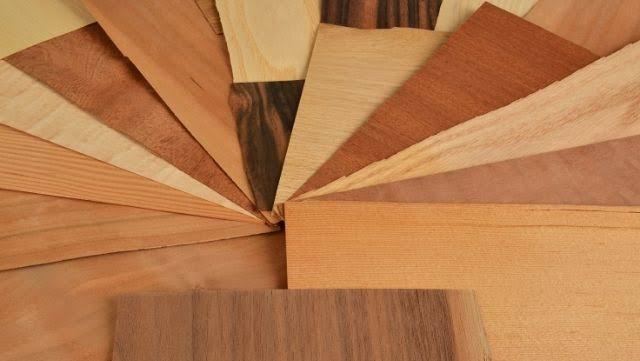Oak veneer has become a popular choice for home furniture due to its blend of beauty, durability, and affordability. Brands like WoodenAve have embraced this material for its versatility, offering a range of products that showcase its natural elegance. This article explores the key advantages of using oak veneer, from its aesthetic appeal to its environmental benefits, helping you make an informed decision for your home.
What Is Oak Veneer?
Oak veneer is a thin layer of real oak wood applied to a core material like MDF (medium-density fiberboard) or particle board. This layer, typically 0.6 to 2 mm thick, retains the grain patterns and color variations of solid oak. Oak veneer provides the look of solid oak at a lower cost, making it an attractive option for furniture, notes The Maryland and Delaware Group Management experts.
How Is Oak Veneer Made?
The process of making oak veneer starts with selecting high-quality oak logs. These logs are softened by steaming to ensure easier cutting. Veneer sheets are then sliced from these logs using a rotary or flat slicing method. The resulting sheets are dried to reduce moisture. After drying, they are trimmed to size and glued onto the core material. This method retains oak’s natural beauty while offering greater stability and durability.
Benefits of Oak Veneer
Cost-Effective: Oak veneer furniture is less expensive than solid oak while offering similar aesthetics.
Eco-Friendly: Veneer manufacturing uses less wood, helping preserve forests and reduce waste.
Versatile Designs: Available in various finishes, oak veneer can match different interior styles. Examples include rustic, modern, and traditional designs.
Durability: Properly finished oak veneer resists scratches and moisture, extending the lifespan of furniture.
Lightweight: Furniture made with oak veneer is lighter, making it easier to move and rearrange within homes.
By understanding oak veneer, consumers can make more informed decisions about incorporating it into their home furniture.
Aesthetic Benefits of Oak VeneerNatural Wood Appearance
Oak veneer offers a genuine wood look by using thin slices of oak glued to a base material. This veneer preserves the unique grain patterns and textures of real oak, making furniture pieces appear high-end without the hefty price tag. Consumers often choose oak veneer for its ability to provide a consistent, authentic wood finish. Oak veneer can mimic the appearance of solid oak, enhancing the visual appeal of home furniture.
Versatility in Finishes and Styles
Oak veneer can be stained or painted in many colors, catering to various interior design preferences. This adaptability allows consumers to match the veneer with both modern and traditional home aesthetics. Oak veneer provides flexibility by adapting to different styles and finishes, ensuring that furniture pieces can seamlessly blend into any room decor. Options include natural, stained, or painted finishes, allowing for a wide range of design possibilities.
Durability and MaintenanceComparing Durability with Solid Oak
Oak veneer offers a high level of durability when used in home furniture. While solid oak is known for its strength, oak veneer is bonded to a substrate that also ensures stability and resistance to warping. This combination provides a surface that withstands daily wear and tear. Oak veneer furniture is less likely to crack or split over time compared to solid oak, making it a reliable choice in terms of longevity.
Ease of Maintenance and Care
Maintaining oak veneer furniture is straightforward and uncomplicated. Regular dusting and occasional wiping with a damp cloth suffice to keep it clean. Unlike solid oak, veneer does not require frequent polishing or oiling, reducing maintenance efforts. Stains and spills can be quickly managed without specialist treatment. For best results, using protective coasters and avoiding harsh chemicals is recommended, but the care routine remains far simpler than with other wood types. This ease of maintenance makes oak veneer a practical option for busy households.
Cost-Effectiveness of Oak VeneerPrice Comparison with Solid Wood Options
Oak veneer offers a budget-friendly alternative to solid oak furniture. While solid oak pieces often come with a high price tag due to the extensive use of natural wood, oak veneer uses thin slices of oak adhered to a more affordable core material like plywood or MDF. This reduces overall costs significantly. Consumers can expect to pay 30% to 50% less for oak veneer furniture compared to solid oak options. This makes high-quality, aesthetically pleasing furniture more accessible.
Long-Term Value
Though oak veneer furniture costs less upfront, it still delivers long-term value. The veneer layer provides the same rich look as solid oak, ensuring that pieces retain their visual appeal over time. Oak veneer furniture also resists warping and cracking, common issues with solid wood, extending its lifespan. With proper care, a well-made oak veneer piece can last for decades, making it a sound investment. Additionally, because of lower initial costs and minimal maintenance expenses, homeowners get substantial value without sacrificing quality or durability.
Environmental BenefitsSustainable Forestry Practices
Oak veneer production supports sustainable forestry by using thin slices of wood, maximizing the yield from each tree. This process ensures that fewer trees are felled compared to solid wood furniture. It’s a method that conserves forests and maintains biodiversity.
Waste Reduction in Furniture Production
Using oak veneer reduces waste in furniture manufacturing. Solid wood furniture generates significant amounts of scrap unsuitable for use. Veneer production maximizes wood utilization by turning scrap pieces into valuable products. This approach minimizes landfill waste and enhances the overall efficiency of manufacturing processes. The use of oak veneer ensures that each log produces more usable material, conserving resources and reducing the environmental footprint of home furniture production.
Conclusion
Oak veneer stands out as an excellent choice for home furniture, offering a blend of beauty, durability, and affordability. Its eco-friendly nature, achieved through sustainable forestry practices and certifications like FSC, makes it a responsible option for environmentally conscious consumers. The versatility and longevity of oak veneer ensure that furniture pieces remain stylish and functional for years. By opting for oak veneer, homeowners can enjoy high-quality, aesthetically pleasing furniture while contributing to a more sustainable future.






